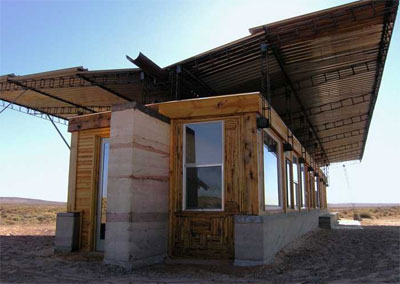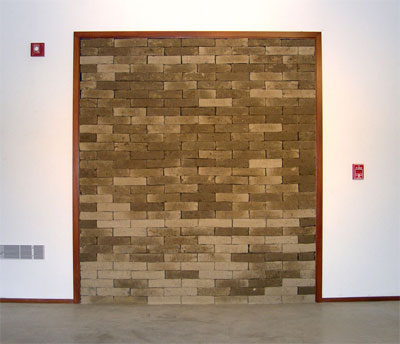
Rammed Earth N51 is a sixty-foot-long freestanding rammed earth wall built by a team of students and staff at MIT during the summer of 2005. The project combines research on historical and contemporary rammed earth methods with material research undertaken in the geotechnical laboratory at MIT. [ previously ]



